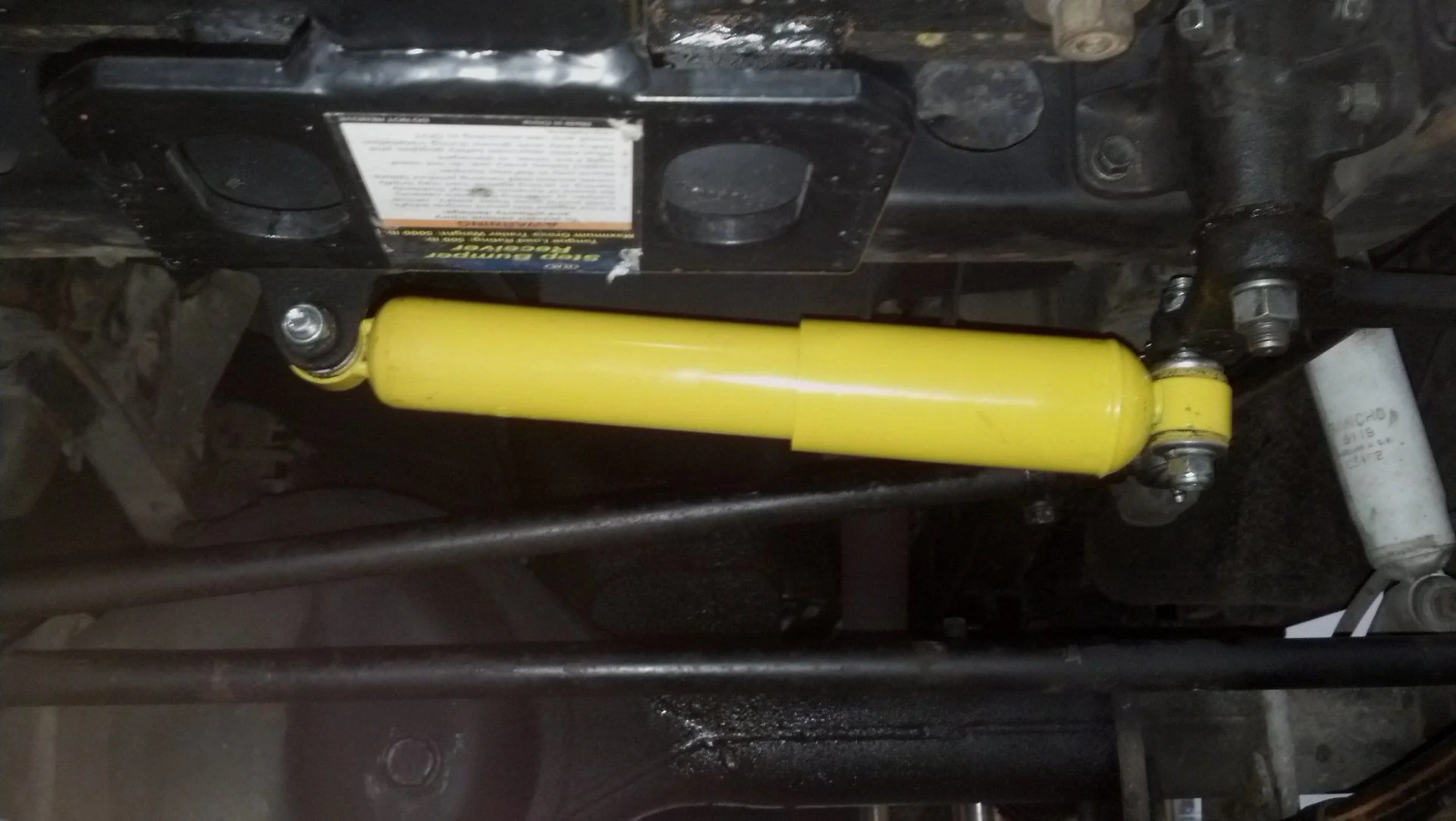merbesfield
SILVER Star
- Thread starter
- #21
10 year old rusty OME springs(the old ones not Dakar) we don;t even have salt/rust issues up here. The Toyota part # tag on the tie rod is looking better
your spring/shackle are stock, they are pretty flat, ride nice but don't handle worth a darn, bumps/dips will tend to bounce the rig around and make it hard work to keep going down the road straight. (my 45LV is like this....)
if alignment is ruled out....
shocks....unless you just put them on.....assume they are bad and replace
I mentioned the bushing earlier, some wander can be found when they are bad...and they probably are(age not miles). But it sounds like more than you would get from just the bushings. have someone turn(hard) the wheel back and forth and you watch the springs move on the shackle or whatever else you find that clunks around
put the tires at 28-32psi.......they may be at what the say on the sidewall.....which(I am am guessing) 50psi, it will drive like poop(quick steering)
my guess is the backspacing on the wheels is causing the tire to rub, new springs really wont change it, the TRE may be adjusted but it wont be enough.
When you say turn wheel hard, do I do this with wheels on ground or up in the air? I will also adjust tire pressure and look into original wheels. Thinking about getting some OEM wagon wheels and having them powder coated the off white factory color. I have never been big on white wagon wheels but they do go well with the green and white color scheme.
Does a suspension up grade make these old trucks drive that much better than the do now w factory suspension? Assuming they don't wander as it is now doing that is. It's a lot of money for just a 2" lift on a street truck. Yes it looks better, but also want it to drive better more importantly. Unsafe right now and just dumped a ton of cash into PS conversion so not happy.

